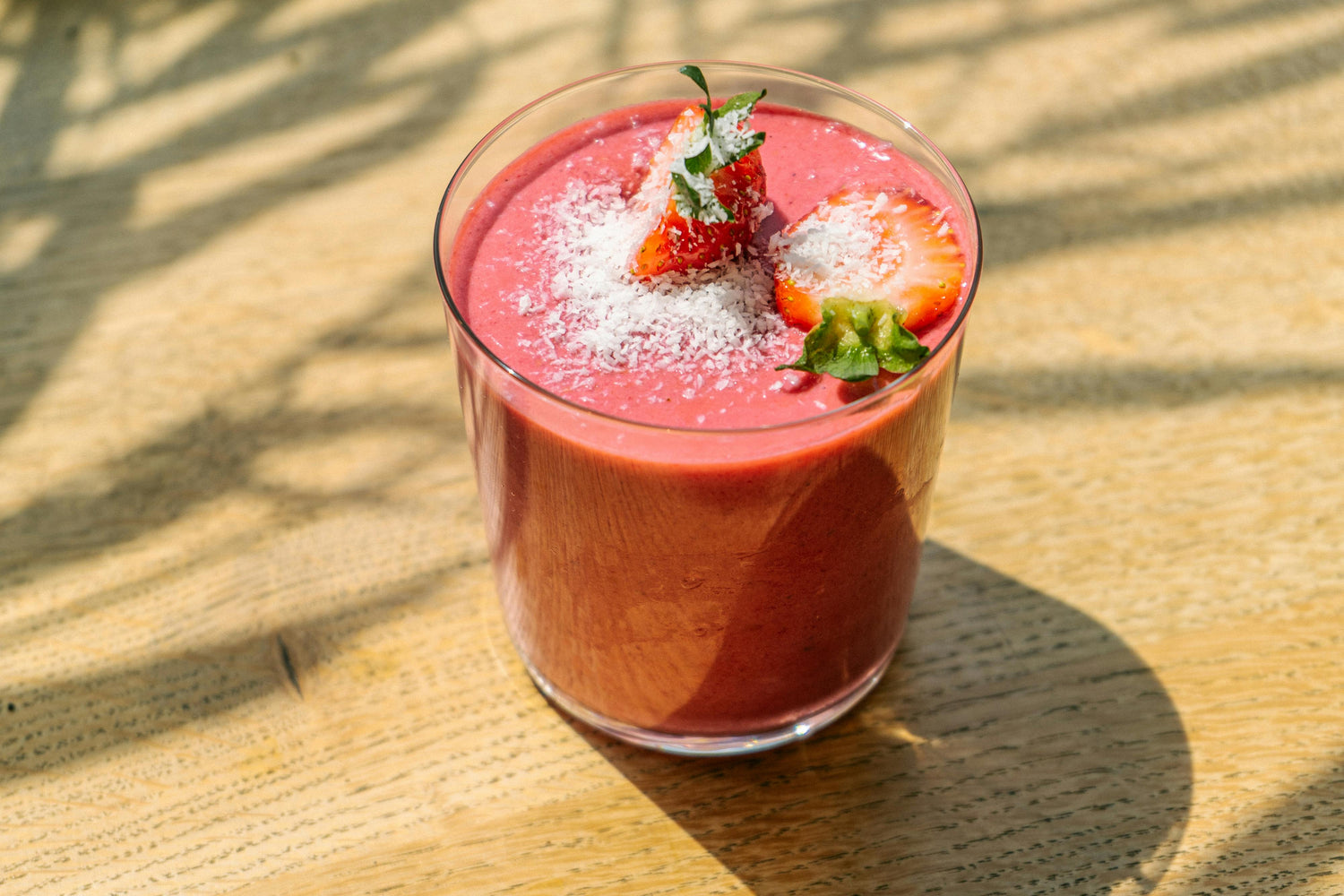
The Truth About Acne: Is It Contagious, and What Really Causes Those Breakouts?
The Truth About Acne: Is It Contagious?
❄️ What You'll Discover in This Article
Picture this: You spend a cozy evening with your partner who's dealing with a breakout. Two days later, you wake up with a fresh pimple of your own. Coincidence? Or did you somehow "catch" their acne?
If you've ever wondered whether acne spreads like a cold, you're not alone. With roughly 80% of us experiencing acne at some point[1], it's one of the most common skin concerns—and one surrounded by the most confusion.
Before you start keeping your distance from loved ones with breakouts, let's clear the air with some science-backed truth about what really causes those pesky pimples.
What Actually Causes Acne? The Four Culprits
Forget what you've heard about dirty skin or chocolate binges. Acne vulgaris (the medical term for common acne) develops when four specific factors collide in your pores[2, 3]:
💧 Oil Overload
Your sebaceous glands produce sebum (natural skin oil) to keep skin healthy. But when hormones like androgens kick production into overdrive, that excess oil sets the stage for breakouts.[2, 4]
🚪 Clogged Pores
Dead skin cells normally shed and exit your pores. In acne-prone skin, these cells stick together like glue, forming plugs that trap oil inside. These tiny blockages (microcomedones) are where all acne begins.[2, 5, 6]
🦠 Bacterial Boom
Cutibacterium acnes bacteria normally live peacefully on everyone's skin. But in oxygen-starved, oil-filled clogged pores, certain strains multiply rapidly and trigger problems.[2, 7, 3, 8]
🔥 Inflammation Station
Your immune system responds to the oil-and-bacteria party by sending inflammatory signals. This creates the redness, swelling, and pain we associate with angry pimples.[3, 8, 9, 2]
These four factors work together like a perfect storm, creating everything from tiny blackheads to painful cystic acne.[1, 2]

The Bottom Line: You Can't "Catch" Acne
✓ Here's What Science Says
Acne is not contagious. You cannot catch it from touching someone's skin, sharing towels, or kissing. The bacteria involved (C. acnes) already live on virtually everyone's skin as part of our normal flora.[2, 10]
Think of it this way: Simply transferring bacteria from one person to another won't cause acne unless the recipient's skin already has the perfect storm of conditions we mentioned above. It's like trying to start a fire—you need more than just a match; you need the right kindling and conditions.

Time to Bust More Acne Myths
The contagion myth is just one misconception about acne. Let's tackle a few more:
Acne means you have dirty skin
Skip moisturizer if you have acne
Transform Your Acne Care with Cold-Preserved Skincare
Now that we understand acne's true causes, let's talk solutions that actually work.
At Wild Ice Botanicals, we've revolutionized acne care through our unique cold preservation technology. Unlike traditional skincare that relies on harsh chemical preservatives (which can irritate sensitive, acne-prone skin), our cold-preserved formulas deliver pure, potent botanicals exactly as nature intended.[18]
❄️ Why Cold Preservation Matters for Acne-Prone Skin
Our freezing process halts oxidation, enzymatic breakdown, and bacterial growth—keeping ingredients fresh and bioactive without adding potential irritants. This means gentler, more effective care for troubled skin.
Your Cold-Preserved Acne Solution Kit
Rarify Refining Acne Spot Treatment
Harness the power of black cumin and curcuma xanthorrhiza—nature's anti-inflammatory warriors. This targeted treatment calms angry breakouts without stripping essential moisture, thanks to cold-preserved botanical integrity.[18]
B-Meltee Cooling Facial Cleanser
Cooling wintergreen meets skin-strengthening niacinamide (Vitamin B) in this gentle powerhouse. Purifies without disrupting your skin barrier—because harsh cleansing only makes acne worse.[18]
D.B.T. Baba Yaga Face, Neck & Eye Cream
Yes, acne-prone skin needs moisture! Rich in cold-preserved peptides and ceramides, this cream strengthens your skin barrier without clogging pores—essential for long-term skin health.[19]
Ready for a complete skin transformation?
Explore Our Product Walkthrough →Clear Skin Starts with Clear Facts
Now you know the truth: acne isn't something you can catch or spread. Those breakouts are the result of your skin's unique internal processes—oil production, cell turnover, bacteria already present, and inflammation.
So go ahead and kiss your partner, share that movie night popcorn, and stop worrying about "catching" their breakout. Instead, focus on what really matters: understanding your skin's needs and choosing gentle, effective care.
With Wild Ice Botanicals' cold-preserved formulas, you're not just treating acne—you're giving your skin the pure, potent nutrition it needs to thrive, naturally.
Remember: healthy skin is a journey, and every journey begins with understanding.
References
- Knutson K. Pathophysiology of Acne Vulgaris. In: StatPearls [Internet]. Treasure Island (FL): StatPearls Publishing; 2024 Jan-. Available from Link.
- Kowalczyk P, Wcisło-Dziadecka D, Głowaczewska A, Kruszniewska-Rajs C, Batory M, Szymańska E, et al. Pathogenesis of Acne Vulgaris. J Eur Acad Dermatol Venereol. 2024;38(S2):3-12. Available from Link.
- Hardy J, Vasseur P, Le-Bihan G, Sogeili-Fininger M, Le Gall-Ianotto C, Dréno B, et al. Pro-inflammatory activity of Cutibacterium acnes phylotype IA1 and extracellular vesicles: An in vitro study. Exp Dermatol. 2024 Aug;33(8):e15150. Available from Link.
- Achermann Y, Goldstein EJC, Coenye T, Shirtliff ME. Propionibacterium acnes: from commensal to opportunistic pathogen. Clin Microbiol Rev. 2014 Jul;27(3):419-40. (While P. acnes is now C. acnes, this article details its role). Available from Link.
- Kligman AM. The role of follicular hyperkeratinization in acne. J Dermatolog Treat. 2000;11(Suppl 2):S5-S8. Available from Link.
- Cunliffe WJ, Holland DB, Jeremy A. Comedone formation: a new concept. J Dermatolog Treat. 2000;11(Suppl 2):S1-S4. Available from Link.
- Pappas A, Johnsen S, Liu JC, Eisinger M. Sebum analysis of individuals with and without acne. Dermatoendocrinol. 2009 May;1(3):157-61. Available from Link.
- Baldwin H. Quality Over Quantity: Rethinking Sebum and Its Role in Acne. Practical Dermatology. June 2020. Available from Link.
- Wang Y, Ma S, Chen X, Geng L. Cellular and molecular mechanisms of acne vulgaris: an update and new insight. Front Immunol. 2024;15:1275269. Available from Link.
- Zeichner JA, Del Rosso JQ, Pillai R, O'Neill AM. New Insights Into Systemic Drivers of Inflammation and Their Contributions to the Pathophysiology of Acne. J Drugs Dermatol. 2024;23(1):s4-s12. Available from Link.
- Williams MR, Gallo RL. The role of the skin microbiome in acne vulgaris. J Clin Invest. 2023;133(22):e171973. (General context on skin microbiome and acne, adapted). Available from Link.
- Callewaert C, Knödlseder N, Karoglan A, Güell M, Paetzold B. Skin microbiome transplantation and manipulation: current state of the art. Comput Struct Biotechnol J. 2021;19:624-631. Available from Link.
- Meixiong J, Ricco C, Vasavda C, Ho BK. Diet and acne: A systematic review. JAAD Int. 2022 Mar 29;7:95-112. Available from Link.
- Dai R, Hua W, Chen W, Xiong L, Li L. The effect of milk consumption on acne: a meta-analysis of observational studies. J Eur Acad Dermatol Venereol. 2018 Dec;32(12):2244-2253. Available from Link.
- Aghasi M, Golzarand M, Shab-Bidar S, Maskarinec G, Ostadrahimi A, Safaiyan A. Dairy intake and acne development: A meta-analysis of observational studies. Clin Nutr. 2019 Jun;38(3):1067-1075. Available from Link.
- Juhl CR, Bergholdt HKM, Miller IM, Jemec GBE, Kanters JK, Ellervik C. Dairy Intake and Acne Vulgaris: A Systematic Review and Meta-Analysis of 78,529 Children, Adolescents, and Young Adults. Nutrients. 2018 Aug 9;10(8):1049. Available from Link.
- Wikipedia contributors. Acne mechanica. Wikipedia, The Free Encyclopedia. Available from Link.
- Goron A, Raoult D. Ceramides in skin health and disease: a review. Eur J Dermatol. 2018;28(1):16-24. Available from Link.
- Creative Proteomics. How Ceramide Analysis Enhances Skincare Product Development. Creative Proteomics Resource. Available from Link.

